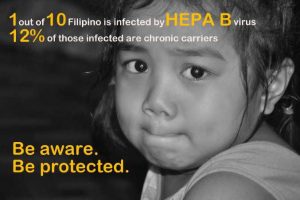NEWS AND UPDATES
PCHRD advocates hepatitis B preventions Code Yellow

The Philippine Council for Health Research and Development of the Department of Science and Technology (PCHRD-DOST) conducted a seminar on “Code Yellow, Mission Against Hepatitis†to draw awareness on the dreadful disease on 30 January 2012.
“Yellow because patients with hepatitis usually manifest yellowish pigmentation of the skin. Code yellow means, we are exposing the information on hepatitis to increase the community’s awareness on the disease,†said Dr. Lemuel Delos Reyes, General Medicine practitioner and Hepatitis B Awareness Campaign advocate during the seminar.
Hepatitis is an inflammation of the liver, most commonly caused by a viral infection. The disease has five different types, hepatitis A, B, C, D and E. In particular, types B and C lead to chronic disease in hundreds of millions of people and are the most common cause of liver cirrhosis and cancer.
Hepatitis A and E are typically caused by ingestion of contaminated food or water. Hepatitis B, C and D usually occur as a result of parenteral contact with infected body fluids. Common modes of transmission include receipt of contaminated blood or blood transfusion, sexual intercourse, sharing of inanimate objects such as wash cloth, towels, toothbrushes, razors, among others. The disease can also be transmitted through prenatal exposure to an infected mother.
Acute infection may occur with limited or no symptoms. Among the symptoms include jaundice (yellowing of the skin and eyes), dark or “tea-like†urine, extreme fatigue, nausea, vomiting, abdominal pain and loss of appetite.
The disease is a serious public health issue because it is highly contagious and easily transmitted. It is also of greatest concern because of the burden of illness and death it cause and the potential for outbreaks and epidemic spread.
According to the Hepatitis B Foundation Institute for Hepatitis and Virus Research, More than 2 billion people worldwide have been infected by hepatitis B Virus (HBV) and 1 million people die each year.
In the Philippines, the World Health Organization (WHO) reported that 60 percent of Filipinos have been infected with HBV while approximately 10 percent of Filipinos have chronic or active Hepatitis–B and are virus carriers. “This means that there are already around 8-10 million Hepatitis-B carriers in the country who might infect more people,†revealed Dr. Delos Reyes.
“We are all at risk. Though the disease has no cure yet, it is highly preventable,†said Dr. Delos Reyes.
Aside from proper hygiene and sanitation, vaccination is an important way to prevent the disease. “Vaccination is the easiest and most logical means of preventing the disease. It is also recognized as the most effective and long term means of preventing hepatitis,†said Dr. Delos Reyes.
Â
You may also like:
 Knowledge on hepatitis B: Effective shield against the disease |
 Prevent Hepatitis B: Consult your doctor today |
 Liver care: A healthy lifestyle for Hepatitis B patients |




